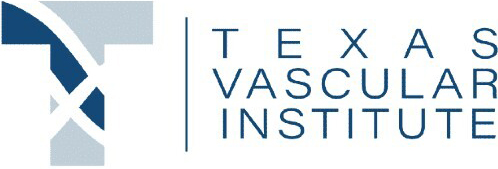By: Dr. Dev Batra | 01.30.23

In our last article, we discussed how chronic venous disease is a spectrum of signs and symptoms from small spider veins all the way to skin ulcers. The focus was placed on understanding the early indicators because early treatment is instrumental in preventing worsening of venous disease.
Varicose veins are in fact a relatively early manifestation of venous disease, and there is an abundance of evidence for treatments that address varicose veins. Unfortunately, the current evidence is less clear on which treatment approaches are best for those with active venous ulcers. Here at Texas Vascular Institute, we constantly review the growing body of clinical evidence to ensure that we are providing the best possible care to our patients. In this article, we review the most recent studies that guide our practice when it comes to venous leg ulcers.
Earlier Absence of Evidence
As recently as 2013, there were no good answers when the Cochrane group reviewed all available evidence of thermal ablation for healing ulcers and preventing ulcer recurrence. Cochrane is a group of physicians and scientists whose goal is to evaluate the scientific quality of clinical studies and provide rigorous interpretation of evidence to guide decisions related to patient care. At that time, they agreed that the minimally invasive options for treating varicose veins (laser ablation, thermal ablation, or sclerotherapy) were as effective as surgery, but they noted an “absence of evidence” to support their use in the treatment of venous ulcers.¹
The idea behind surgical removal of diseased veins (vein stripping) is that it stops the ‘vicious cycle’ of reflux and inflammation that drives the progression of chronic venous disease. Minimally invasive ablation is intended to yield the same result, but through a safer, more cost-effective means. Evidence has historically shown these options to be at least as good in treating varicose veins, and a more recent study published by Proebstle et al in 2015 has demonstrated that radiofrequency ablation (RFA) is an effective treatment for venous reflux in the great saphenous vein, even 5 years after treatment.²
In the decision by the Cochrane group, the “absence of evidence” points to a lack of well-designed studies directed toward healing venous ulcers, but in more recent years, new results are beginning to suggest an answer.
New Data, But Some Questions Still Unanswered
Morrison et al in collaboration with Medtronic compared cyanoacrylate closure (VenaSeal) to RFA in the VeClose trial for incompetent veins. Briefly, they found that VenaSeal led to faster occlusion of the diseased vein and lower recurrence of reopening as compared to RFA, but the quality of life scores improved equally with both therapies.³ However, they chose the primary endpoint to be occlusion of incompetent great saphenous veins, so while it might seem fair to apply this to treating ulcers, there is no data in this study to support that.
The earliest study addressing active ulcers is an Egyptian study by Elshimy et al in 2014 that compared ulcer healing with compression therapy alone to healing with compression and RFA, and they showed that the addition of RFA improved ulcer healing and reduced recurrence.⁴ Most notably, when comparing their study to the well-known ESCHAR study evaluating the benefit of surgical intervention, they found that RFA not only prevented ulcer recurrence risk, but also yielded improved healing rates.⁵ This has been replicated by a study in Brazil by Puggina et al who also found faster healing rates in the RFA group,⁶ and more recently a large randomized trial in the UK by Gohel and colleagues.⁷ In comparison, Marston et al are performing a retrospective analysis of patients treated with laser thermal ablation. Early data suggests that while laser ablation is usually effective in treating and preventing ulcers, it does not appear to be as effective as RFA.⁸
Putting it all together, the current data suggest that in the treatment of chronic venous ulcers, radiofrequency ablation is the most effective treatment option to speed healing and prevent ulcer recurrence. However, we expect to see new evidence emerge as other modalities, like VenaSeal, have yet to be tested directly with the intent of healing venous leg ulcers.

About the Author
Dr. Dev Batra, M.D. is a vein specialist and founding partner of Texas Vascular Institute. Holding board certifications in radiology and vascular & interventional radiology, he is well-versed in vein issues and has been voted one of D-Magazine’s best doctors in Dallas for three years running.
This blog post was written with research and editorial assistance from OnChart™.
References
[1] Samuel N, Carradice D, Wallace T, Smith GE, C. I. (2013). Endovenous thermal ablation for healing venous ulcers and preventing recurrence (Review), (10).
[2] Proebstle, T. M., Alm, B. J., G??ckeritz, O., Wenzel, C., Noppeney, T., Lebard, C., … Pichot, O. (2015). Five-year results from the prospective European multicentre cohort study on radiofrequency segmental thermal ablation for incompetent great saphenous veins. British Journal of Surgery, 102(3).
[3] Morrison, N., Gibson, K., Vasquez, M., Weiss, R., Cher, D., Madsen, M., & Jones, A. (2017). VeClose trial 12-month outcomes of cyanoacrylate closure versus radiofrequency ablation for incompetent great saphenous veins. Journal of Vascular Surgery: Venous and Lymphatic Disorders, 5(3), 321–330.
[4] Elshimy, W., El Sherbeni, M., Gameel, A., & Salem, A. (2014). Healing and recurrence rates following radiofrequency ablation of the saphenous vein and ultrasound-guided foam sclerotherapy of perforator reflux in patients with venous ulceration. The Egyptian Journal of Surgery, 33(2), 110.
[5] Barwell, J. R., Davies, C. E., Deacon, J., Harvey, K., Minor, J., Sassano, A., … Poskitt, K. R. (2004). Comparison of surgery and compression with compression alone in chronic venous ulceration (ESCHAR study): randomised controlled trial. The Lancet, 363(9424), 1854–1859.
[6] Puggina, J., Campos Junior, W., Porta, R. M., dos Santos, J. B., da Silva, E. S., De Luccia, N., … Sincos, I. R. (2018). Venous Ulcer: Could Endovenous Radiofrequency Ablation Improve Ulcer Healing? Preliminary Results of a Randomized Controlled Trial. Journal of Vascular Surgery: Venous and Lymphatic Disorders, 6(2), 289–290.
[7] Gohel, M. S., Heatley, F., Liu, X., Bradbury, A., Bulbulia, R., Cullum, N., … Davies, A. H. (2018). A Randomized Trial of Early Endovenous Ablation in Venous Ulceration. New England Journal of Medicine, 378(22), 2105–2114.
[8] Marston, W. A., Crowner, J., Kouri, A., & Kalbaugh, C. A. (2017). Incidence of venous leg ulcer healing and recurrence after treatment with endovenous laser ablation. Journal of Vascular Surgery: Venous and Lymphatic Disorders, 5(4), 525–532.
Medical Disclaimer
The Materials available in the Texas Vascular Institute blog are for informational and educational purposes only and are not a substitute for the professional judgment of a healthcare professional in diagnosing and treating patients.
Read more blogs
Varicose Veins in Hurst: Expert Care at Your Doorstep
At Texas Vascular Institute (TVI), we empathize with the discomfort and worry caused by varicose veins. That's why we're here in Hurst, providing cutting-edge treatments that are customized to address your unique needs. With our team of experts wielding extensive knowledge and experience, we promise to provide the utmost care in a warm and compassionate atmosphere. Let us help you find relief and regain your confidence!
Varicose Veins in Dallas: Quality Care You Can Trust
Our exceptional team of vascular specialists are true leaders in their field, armed with years of invaluable experience. Harnessing the power of cutting-edge advancements in vein treatment, they've transformed the lives of numerous patients, liberating them from the pain and unsightly burden of varicose veins. When you choose TVI, you're opting for unparalleled care and unwavering commitment to your varicose vein needs in Dallas.
How to Get Rid of Varicose Veins in Hurst?
The causes and risk factors of varicose veins vary from genetics to age, pregnancy, obesity, and prolonged standing or sitting, among other factors. Some typical signs and possible issues include discomfort, inflammation, irritation, hemorrhage, dermatological alterations, sores, and thrombosis. You may want to seek medical attention if you experience any of the following symptoms or complications.
WHAT OUR PATIENTS
have to say
Texas Vascular Institute always appreciates feedback from our valued patients. To date, we’re thrilled to have collected 378 reviews with an average rating of 5 out of 5 stars. Please read what others are saying about Texas Vascular Institute below, and as always, we would love to collect your feedback.
Leave a Review
Amazing Practice
I'm very particular with my Healthcare and tend to be cautious with referrals to specialists. This office is amazing from the first point of contact. Their staff are friendly, professional and highly knowledgeable. Then the Dr is just as amazing as his staff, absolutely brilliant. Office manager Jessica has this office running like a well oiled machine and does so with a smile, an air of confidence, kindness and professionalism. Love this practice!!
- Richard G.

Beyond Thankful
Dr Batra and his staff are amazing! We are so grateful to have found him. Everyone is so kind and so caring and Dr Batra explains everything so well and does procedures with excellence. Beyond thankful to be under their care!!!
- Bitsy P.

Gold Standard
This is a gold standard for how a medical practice should be run. I was promptly seen at my scheduled time, my ultrasound was thorough and I received plenty of attention and care from the staff and Dr.Batra.
- Weronika L.
INSURANCE
We accept most major insurance plans. Please contact the medical office for all insurance related questions.









3500 Oak Lawn Ave, #760
Dallas, TX 75219
For Appointments: 972-798-4710
General Inquiries: 972-646-8346

809 West Harwood Rd, Suite 101,
Hurst, TX 76054
For Appointments: 972-798-4710
General Inquiries: 972-646-8346

